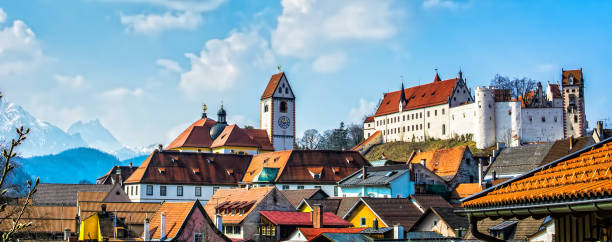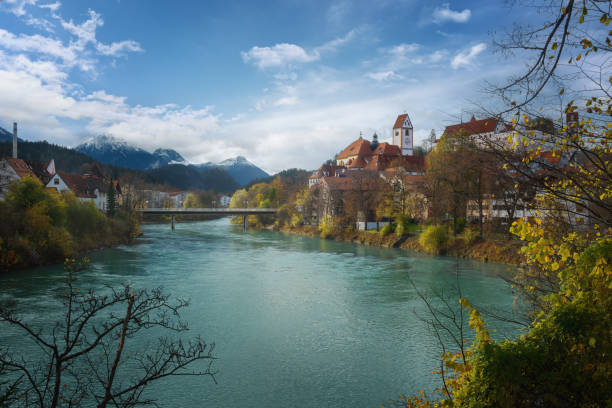
St Mang Pictures, Images and Stock Photos
Browse 230+ st mang stock photos and images available, or start a new search to explore more stock photos and images.


charming Hohes schloss Fussen and St. Mang church, Germany

Old books divided by themes and ordered on shelves in the old Library at the St. Mang's Abbey, one of the landmarks of Füssen.
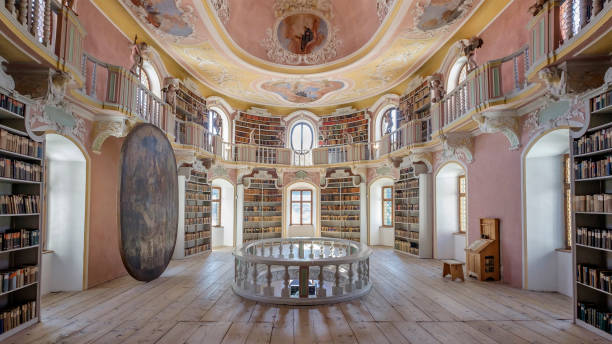
Old books divided by themes and ordered on shelves in the old Library at the St. Mang's Abbey, one of the landmarks of Füssen.
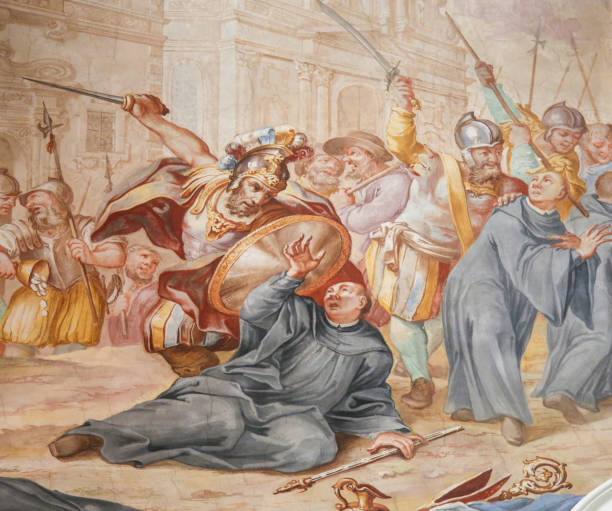
Fresco depicting a Scene in the Life of Saint Magnus of Fussen, Saint Mang, in the Basilica of Fussen, Bavaria, Germany.

St Mang Abbey in Fuessen, a town in the Ostallgaeu district in Bavaria, Germany
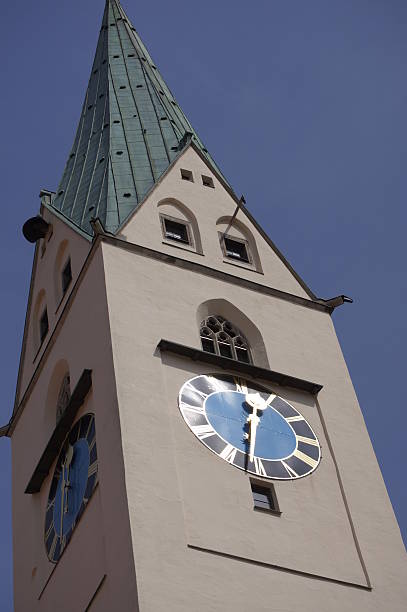
Saint Mang Church, Germany, Bavaria, Allgäu, Kempten
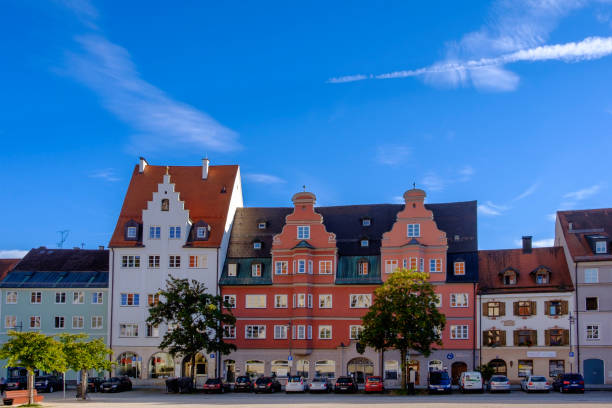
St. Mang Square in Kempten is a large open space south of the parish church of San Mang, bordered by large patrician buildings. The city, located in the federal state of Bavaria, is considered the oldest urban settlement in Germany.
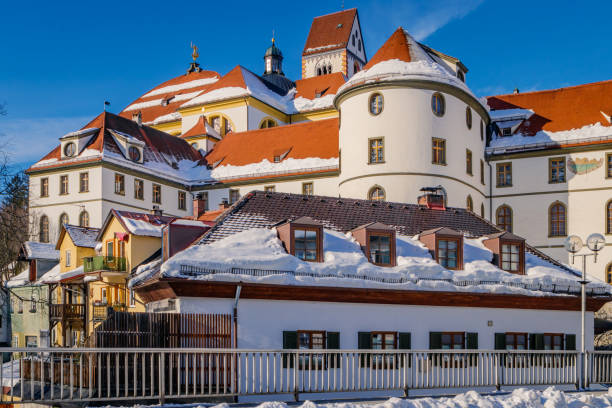
St. Mang's Abbey (Kloster Sankt Mang) at winter in the snowy historic old town of Füssen, a romantic medieval city on the Romantic Road in Bavaria, Germany.

In the interior of the monastery of St. Mang in Füssen im Allgäu, Bavaria, Germany
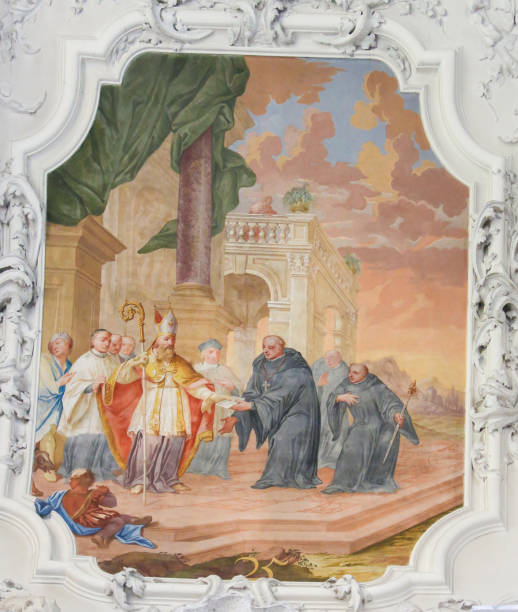
Fresco depicting Saint Benedict and Saint Magnus of Fussen, Saint Mang, in the Basilica of Fussen, Bavaria, Germany.
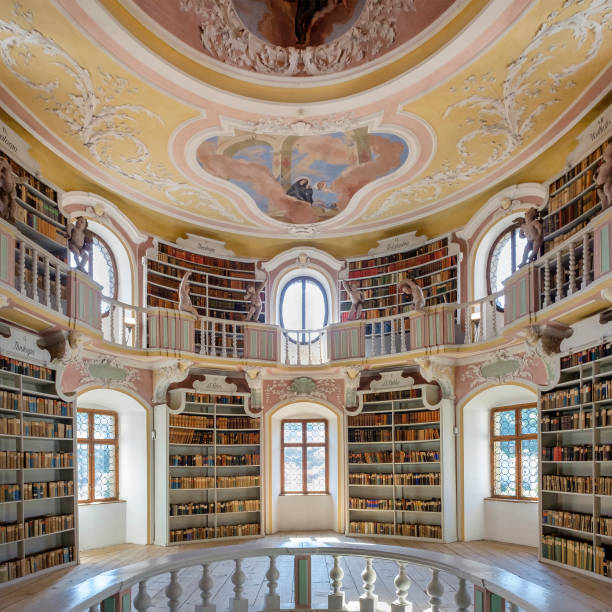
Old books divided by themes and ordered on shelves in the old Library at the St. Mang's Abbey, one of the landmarks of Füssen.
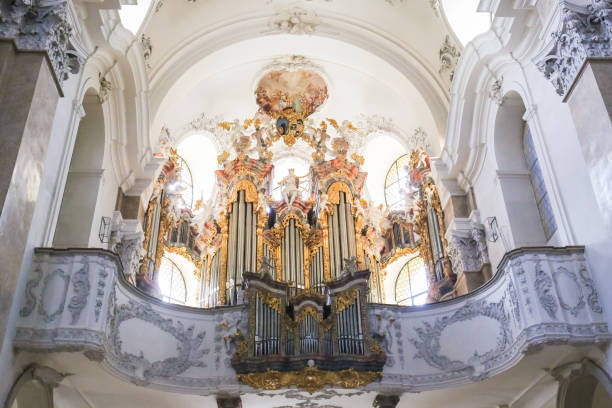
18th Century Main Organ in Saint Mang Basilica in Fussen, Bavaria, Germany, by Andreas Jager.
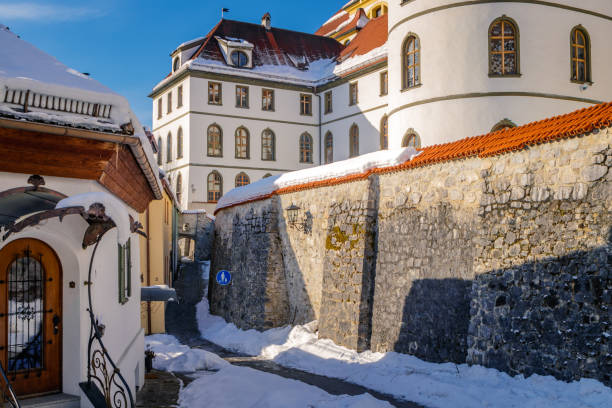
St. Mang's Abbey (Kloster Sankt Mang) at winter in the snowy historic old town of Füssen, a romantic medieval city on the Romantic Road in Bavaria, Germany.

The roofs of St. Mang in Füssen, Bavaria
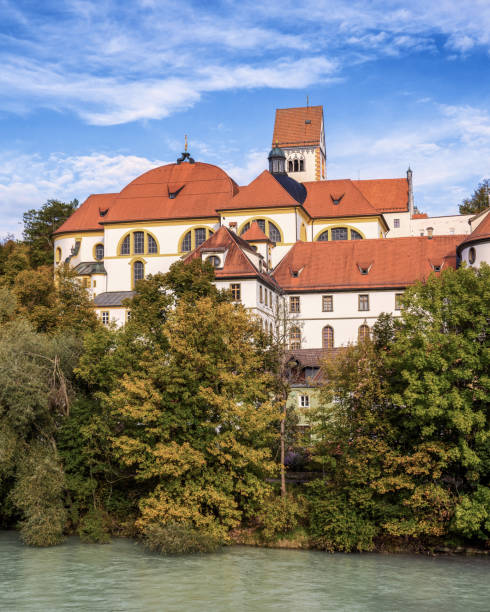
The abbey's Imperial Hall was designed by master builder Johann Jakob Herkomer (1652–1717) as the center of the entire monastery complex. At the same time, the hall is located on the central axis of the monastery church and monastery entrance. The architecture and artistic furnishings as a colonnade hall had the political function of demonstrating the stately size of the abbey. The text was written by myself
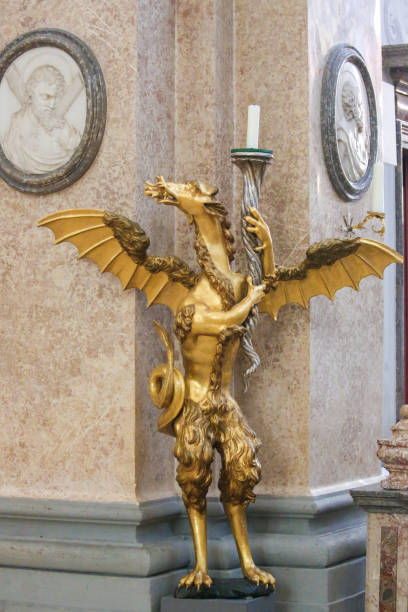
Bronze Candelabrum in the Shape of a Dragon in the Saint Mang Basilica in Fussen, Bavaria, Germany.

The monastery and the former Basilica of St. Mang date back to St. Magnus, an Irish missionary from the monastery of St. Gallen who worked in the Allgäu in the 8th century. Above his cell was the first church, which was extended and built over in the course of the centuries. The church was extended to its present size between the 11th and 14th centuries. The tower dates from 1200 and was ravaged and looted in the Thirty Years’ War, St. Mang was rebuilt in the Italian Baroque style by Johann Jakob Herkomer at the beginning of the 18th century. A light-flooded room, frescoes and marble characterize this style. The text was writen by myself
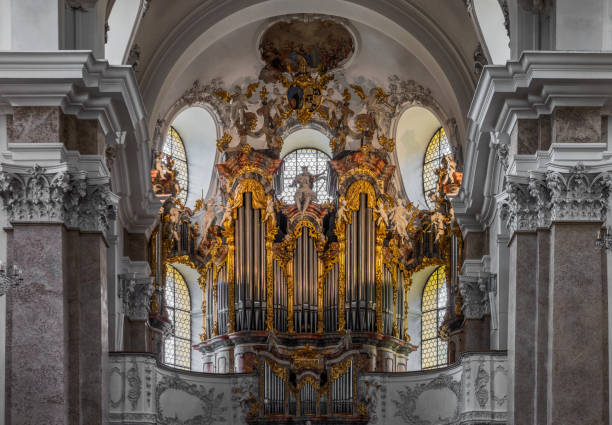
The monastery and the former Basilica of St. Mang date back to St. Magnus, an Irish missionary from the monastery of St. Gallen who worked in the Allgäu in the 8th century. Above his cell was the first church, which was extended and built over in the course of the centuries. The church was extended to its present size between the 11th and 14th centuries. The tower dates from 1200 and was ravaged and looted in the Thirty Years’ War, St. Mang was rebuilt in the Italian Baroque style by Johann Jakob Herkomer at the beginning of the 18th century. A light-flooded room, frescoes and marble characterize this style. The text was writen by myself
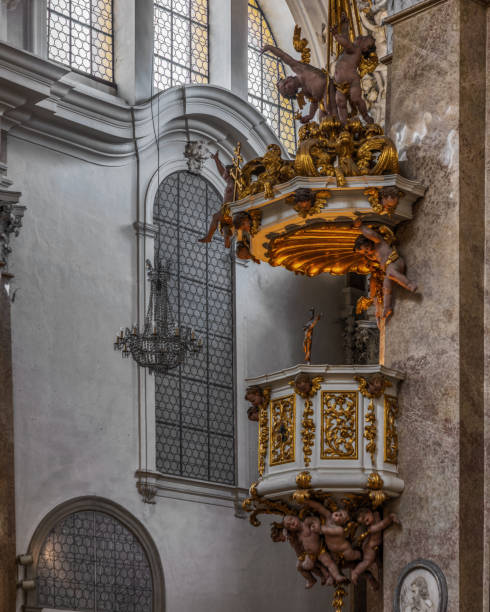
The monastery and the former Basilica of St. Mang date back to St. Magnus, an Irish missionary from the monastery of St. Gallen who worked in the Allgäu in the 8th century. Above his cell was the first church, which was extended and built over in the course of the centuries. The church was extended to its present size between the 11th and 14th centuries. The tower dates from 1200 and was ravaged and looted in the Thirty Years’ War, St. Mang was rebuilt in the Italian Baroque style by Johann Jakob Herkomer at the beginning of the 18th century. A light-flooded room, frescoes and marble characterize this style. The text was writen by myself
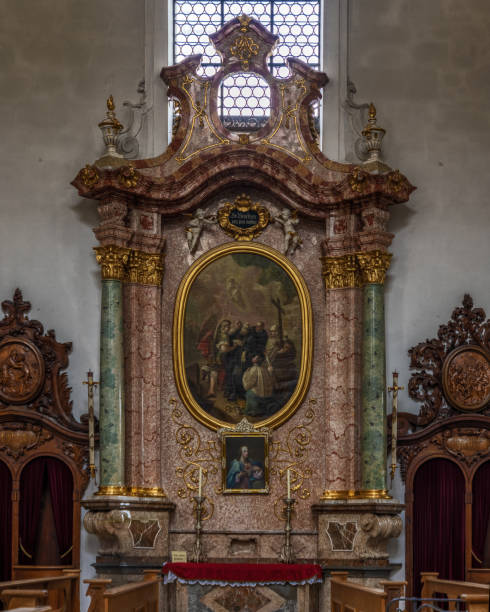
The monastery and the former Basilica of St. Mang date back to St. Magnus, an Irish missionary from the monastery of St. Gallen who worked in the Allgäu in the 8th century. Above his cell was the first church, which was extended and built over in the course of the centuries. The church was extended to its present size between the 11th and 14th centuries. The tower dates from 1200 and was ravaged and looted in the Thirty Years’ War, St. Mang was rebuilt in the Italian Baroque style by Johann Jakob Herkomer at the beginning of the 18th century. A light-flooded room, frescoes and marble characterize this style. The text was writen by myself
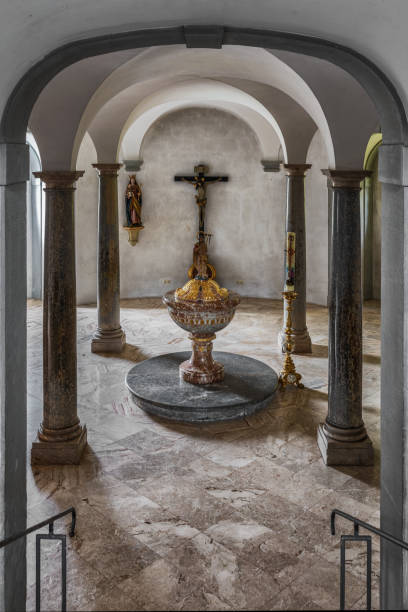
The monastery and the former Basilica of St. Mang date back to St. Magnus, an Irish missionary from the monastery of St. Gallen who worked in the Allgäu in the 8th century. Above his cell was the first church, which was extended and built over in the course of the centuries. The church was extended to its present size between the 11th and 14th centuries. The tower dates from 1200 and was ravaged and looted in the Thirty Years’ War, St. Mang was rebuilt in the Italian Baroque style by Johann Jakob Herkomer at the beginning of the 18th century. A light-flooded room, frescoes and marble characterize this style. The text was writen by myself

The monastery and the former Basilica of St. Mang date back to St. Magnus, an Irish missionary from the monastery of St. Gallen who worked in the Allgäu in the 8th century. Above his cell was the first church, which was extended and built over in the course of the centuries. The church was extended to its present size between the 11th and 14th centuries. The tower dates from 1200 and was ravaged and looted in the Thirty Years’ War, St. Mang was rebuilt in the Italian Baroque style by Johann Jakob Herkomer at the beginning of the 18th century. A light-flooded room, frescoes and marble characterize this style. The text was writen by myself

The monastery and the former Basilica of St. Mang date back to St. Magnus, an Irish missionary from the monastery of St. Gallen who worked in the Allgäu in the 8th century. Above his cell was the first church, which was extended and built over in the course of the centuries. The church was extended to its present size between the 11th and 14th centuries. The tower dates from 1200 and was ravaged and looted in the Thirty Years’ War, St. Mang was rebuilt in the Italian Baroque style by Johann Jakob Herkomer at the beginning of the 18th century. A light-flooded room, frescoes and marble characterize this style. The text was writen by myself
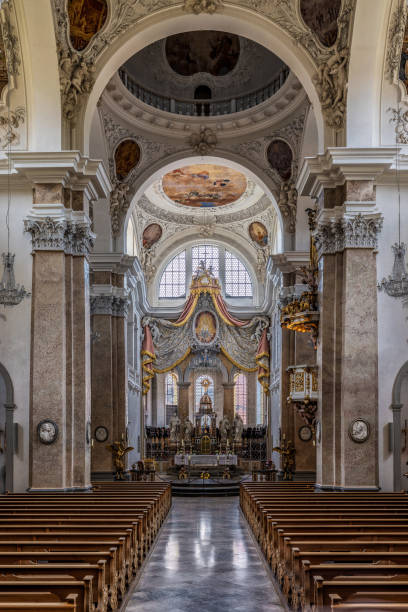
The monastery and the former Basilica of St. Mang date back to St. Magnus, an Irish missionary from the monastery of St. Gallen who worked in the Allgäu in the 8th century. Above his cell was the first church, which was extended and built over in the course of the centuries. The church was extended to its present size between the 11th and 14th centuries. The tower dates from 1200 and was ravaged and looted in the Thirty Years’ War, St. Mang was rebuilt in the Italian Baroque style by Johann Jakob Herkomer at the beginning of the 18th century. A light-flooded room, frescoes and marble characterize this style. The text was writen by myself
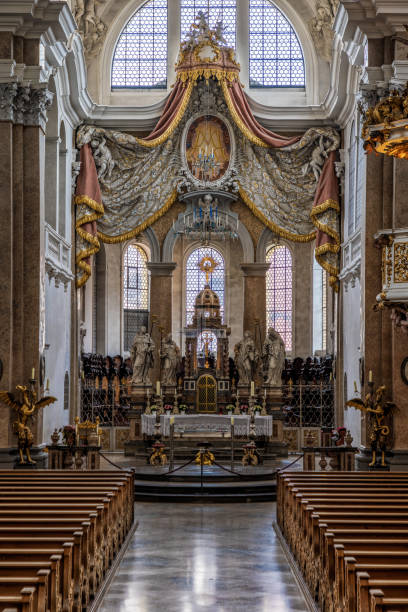
The monastery and the former Basilica of St. Mang date back to St. Magnus, an Irish missionary from the monastery of St. Gallen who worked in the Allgäu in the 8th century. Above his cell was the first church, which was extended and built over in the course of the centuries. The church was extended to its present size between the 11th and 14th centuries. The tower dates from 1200 and was ravaged and looted in the Thirty Years’ War, St. Mang was rebuilt in the Italian Baroque style by Johann Jakob Herkomer at the beginning of the 18th century. A light-flooded room, frescoes and marble characterize this style. The text was writen by myself

The monastery and the former Basilica of St. Mang date back to St. Magnus, an Irish missionary from the monastery of St. Gallen who worked in the Allgäu in the 8th century. Above his cell was the first church, which was extended and built over in the course of the centuries. The church was extended to its present size between the 11th and 14th centuries. The tower dates from 1200 and was ravaged and looted in the Thirty Years’ War, St. Mang was rebuilt in the Italian Baroque style by Johann Jakob Herkomer at the beginning of the 18th century. A light-flooded room, frescoes and marble characterize this style. The text was writen by myself
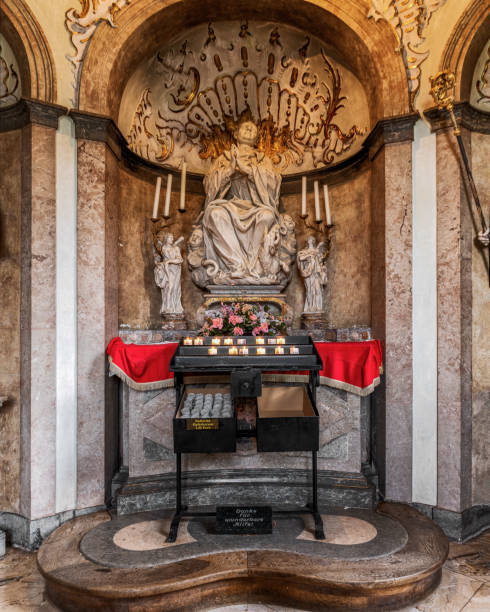
The monastery and the former Basilica of St. Mang date back to St. Magnus, an Irish missionary from the monastery of St. Gallen who worked in the Allgäu in the 8th century. Above his cell was the first church, which was extended and built over in the course of the centuries. The church was extended to its present size between the 11th and 14th centuries. The tower dates from 1200 and was ravaged and looted in the Thirty Years’ War, St. Mang was rebuilt in the Italian Baroque style by Johann Jakob Herkomer at the beginning of the 18th century. A light-flooded room, frescoes and marble characterize this style. The text was writen by myself

The monastery and the former Basilica of St. Mang date back to St. Magnus, an Irish missionary from the monastery of St. Gallen who worked in the Allgäu in the 8th century. Above his cell was the first church, which was extended and built over in the course of the centuries. The church was extended to its present size between the 11th and 14th centuries. The tower dates from 1200 and was ravaged and looted in the Thirty Years’ War, St. Mang was rebuilt in the Italian Baroque style by Johann Jakob Herkomer at the beginning of the 18th century. A light-flooded room, frescoes and marble characterize this style. The text was writen by myself
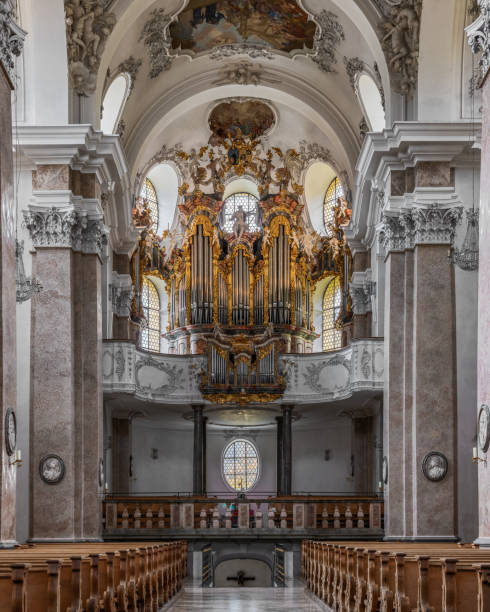
The monastery and the former Basilica of St. Mang date back to St. Magnus, an Irish missionary from the monastery of St. Gallen who worked in the Allgäu in the 8th century. Above his cell was the first church, which was extended and built over in the course of the centuries. The church was extended to its present size between the 11th and 14th centuries. The tower dates from 1200 and was ravaged and looted in the Thirty Years’ War, St. Mang was rebuilt in the Italian Baroque style by Johann Jakob Herkomer at the beginning of the 18th century. A light-flooded room, frescoes and marble characterize this style. The text was writen by myself
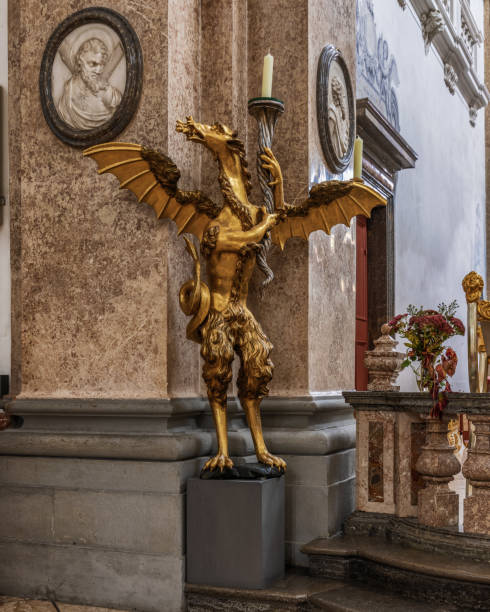
The monastery and the former Basilica of St. Mang date back to St. Magnus, an Irish missionary from the monastery of St. Gallen who worked in the Allgäu in the 8th century. Above his cell was the first church, which was extended and built over in the course of the centuries. The church was extended to its present size between the 11th and 14th centuries. The tower dates from 1200 and was ravaged and looted in the Thirty Years’ War, St. Mang was rebuilt in the Italian Baroque style by Johann Jakob Herkomer at the beginning of the 18th century. A light-flooded room, frescoes and marble characterize this style. The text was writen by myself
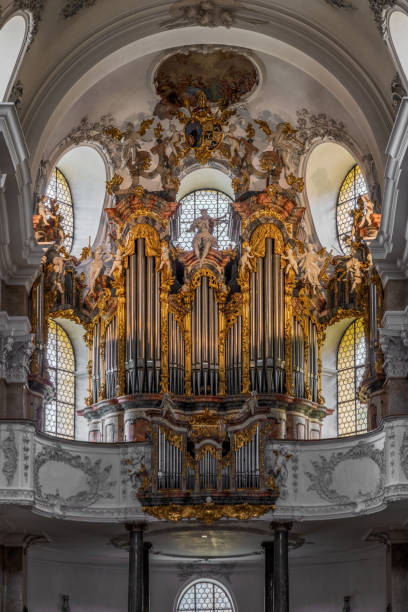
The monastery and the former Basilica of St. Mang date back to St. Magnus, an Irish missionary from the monastery of St. Gallen who worked in the Allgäu in the 8th century. Above his cell was the first church, which was extended and built over in the course of the centuries. The church was extended to its present size between the 11th and 14th centuries. The tower dates from 1200 and was ravaged and looted in the Thirty Years’ War, St. Mang was rebuilt in the Italian Baroque style by Johann Jakob Herkomer at the beginning of the 18th century. A light-flooded room, frescoes and marble characterize this style. The text was writen by myself
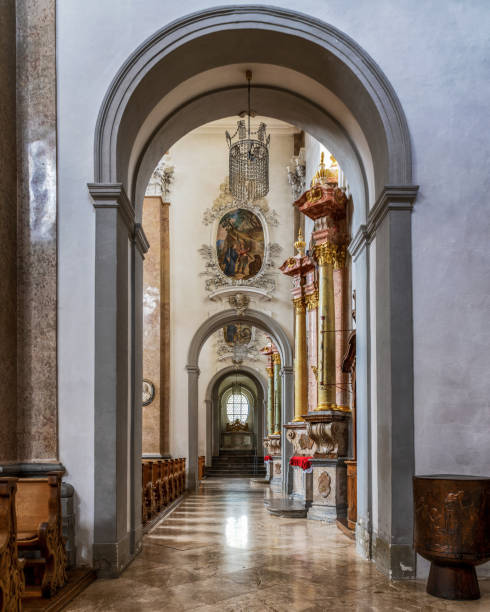
The monastery and the former Basilica of St. Mang date back to St. Magnus, an Irish missionary from the monastery of St. Gallen who worked in the Allgäu in the 8th century. Above his cell was the first church, which was extended and built over in the course of the centuries. The church was extended to its present size between the 11th and 14th centuries. The tower dates from 1200 and was ravaged and looted in the Thirty Years’ War, St. Mang was rebuilt in the Italian Baroque style by Johann Jakob Herkomer at the beginning of the 18th century. A light-flooded room, frescoes and marble characterize this style. The text was writen by myself
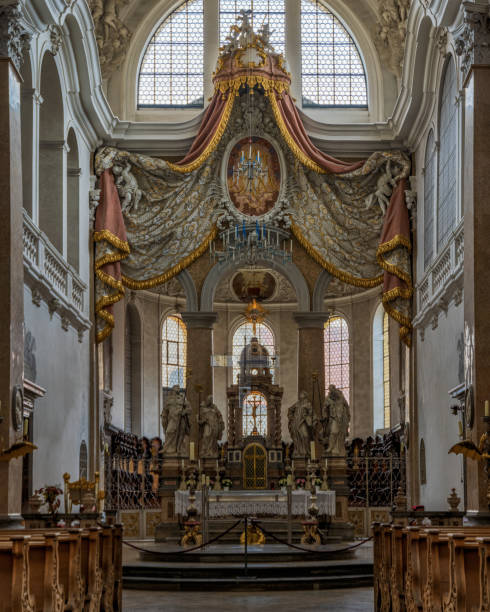
The monastery and the former Basilica of St. Mang date back to St. Magnus, an Irish missionary from the monastery of St. Gallen who worked in the Allgäu in the 8th century. Above his cell was the first church, which was extended and built over in the course of the centuries. The church was extended to its present size between the 11th and 14th centuries. The tower dates from 1200 and was ravaged and looted in the Thirty Years’ War, St. Mang was rebuilt in the Italian Baroque style by Johann Jakob Herkomer at the beginning of the 18th century. A light-flooded room, frescoes and marble characterize this style. The text was writen by myself

The monastery and the former Basilica of St. Mang date back to St. Magnus, an Irish missionary from the monastery of St. Gallen who worked in the Allgäu in the 8th century. Above his cell was the first church, which was extended and built over in the course of the centuries. The church was extended to its present size between the 11th and 14th centuries. The tower dates from 1200 and was ravaged and looted in the Thirty Years’ War, St. Mang was rebuilt in the Italian Baroque style by Johann Jakob Herkomer at the beginning of the 18th century. A light-flooded room, frescoes and marble characterize this style. The text was writen by myself

The monastery and the former Basilica of St. Mang date back to St. Magnus, an Irish missionary from the monastery of St. Gallen who worked in the Allgäu in the 8th century. Above his cell was the first church, which was extended and built over in the course of the centuries. The church was extended to its present size between the 11th and 14th centuries. The tower dates from 1200 and was ravaged and looted in the Thirty Years’ War, St. Mang was rebuilt in the Italian Baroque style by Johann Jakob Herkomer at the beginning of the 18th century. A light-flooded room, frescoes and marble characterize this style. The text was writen by myself
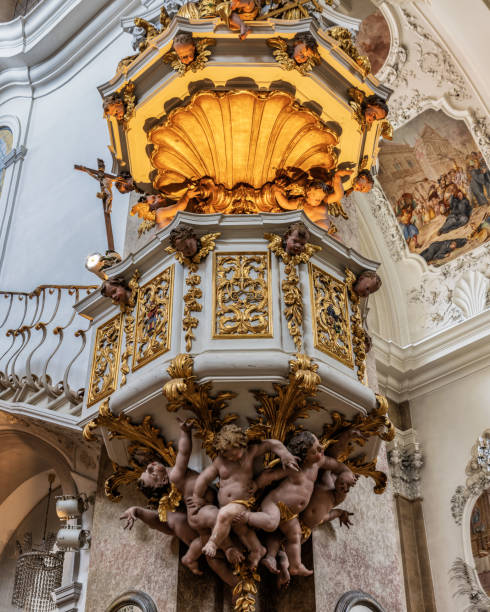
The monastery and the former Basilica of St. Mang date back to St. Magnus, an Irish missionary from the monastery of St. Gallen who worked in the Allgäu in the 8th century. Above his cell was the first church, which was extended and built over in the course of the centuries. The church was extended to its present size between the 11th and 14th centuries. The tower dates from 1200 and was ravaged and looted in the Thirty Years’ War, St. Mang was rebuilt in the Italian Baroque style by Johann Jakob Herkomer at the beginning of the 18th century. A light-flooded room, frescoes and marble characterize this style. The text was writen by myself
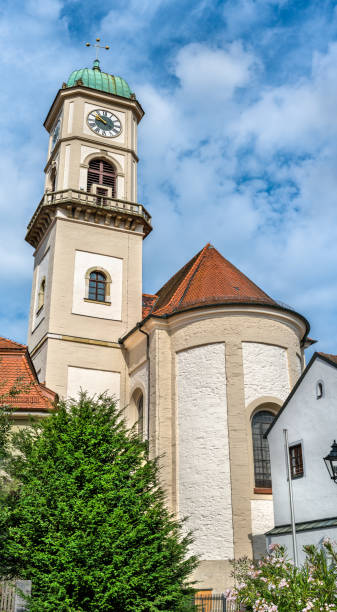
St. Andreas and St. Mang church in Regensburg - Bavaria, Germany
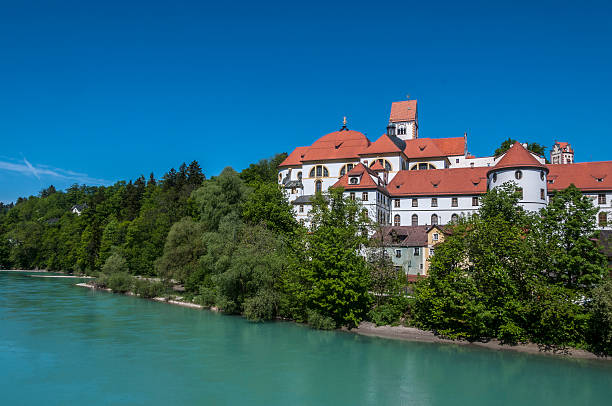
St Mang's Basilica and St Mang Abbey on the River Lech, Fuessen, Bavaria, Germany. Benedictine monastery,
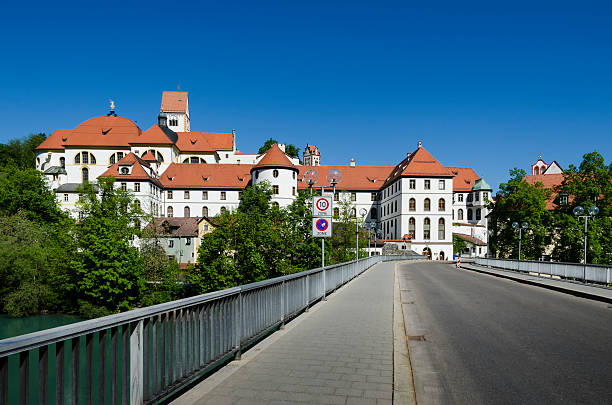
St Mang's Basilica and St Mang's Abbey on the Lech River, Fuessen, Bavaria, Germany. Benedictine monastery. Bridge over River Lech.
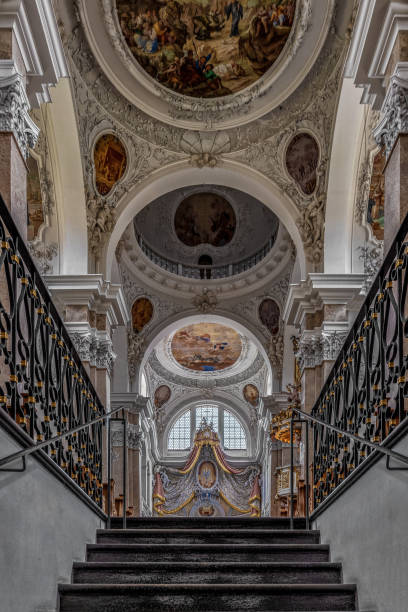
The monastery and the former Basilica of St. Mang date back to St. Magnus, an Irish missionary from the monastery of St. Gallen who worked in the Allgäu in the 8th century. Above his cell was the first church, which was extended and built over in the course of the centuries. The church was extended to its present size between the 11th and 14th centuries. The tower dates from 1200 and was ravaged and looted in the Thirty Years’ War, St. Mang was rebuilt in the Italian Baroque style by Johann Jakob Herkomer at the beginning of the 18th century. A light-flooded room, frescoes and marble characterize this style. The text was writen by myself
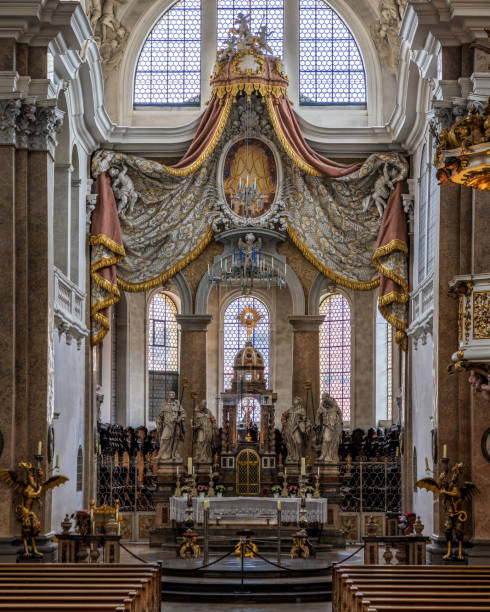
The monastery and the former Basilica of St. Mang date back to St. Magnus, an Irish missionary from the monastery of St. Gallen who worked in the Allgäu in the 8th century. Above his cell was the first church, which was extended and built over in the course of the centuries. The church was extended to its present size between the 11th and 14th centuries. The tower dates from 1200 and was ravaged and looted in the Thirty Years’ War, St. Mang was rebuilt in the Italian Baroque style by Johann Jakob Herkomer at the beginning of the 18th century. A light-flooded room, frescoes and marble characterize this style. The text was writen by myself
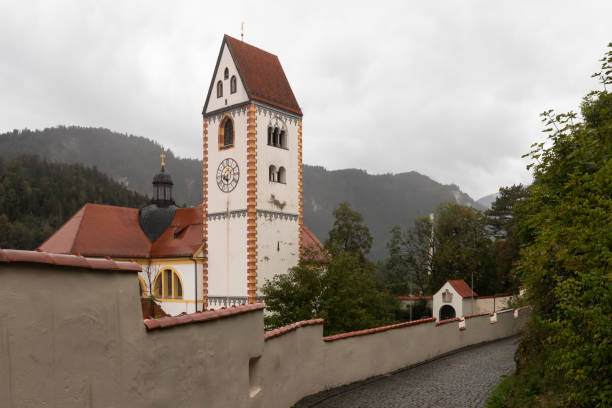
Catholic parish church St. Mang at the foot of the High Castle in Füssen in Germany.

Fussen, Germany - June 30, 2012: St. Mang former monastery in Fussen Germany

Fussen, Germany - June 30, 2012: Main entrance into the Baroque Benedictine abbey courtyard in Fussen, Germany
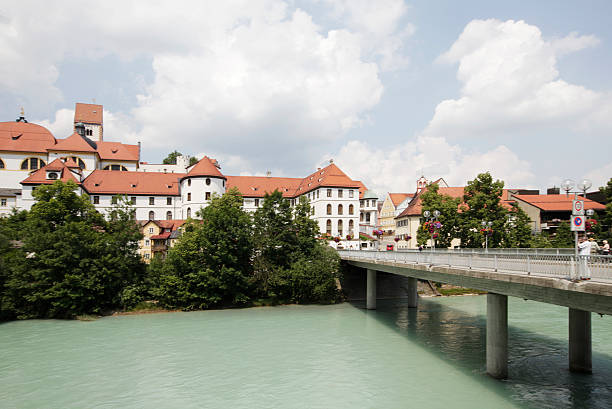
Fussen, Germany - July 10, 2013: The Benedictine abbey of Saint Mang was founded in the first half of the 9th centur.y. It was the proprieraty monastery of the Prince-Bishops of Augsburg. The hermit magnus of Fussen, also known as Sanit Mang built a cell and an oratory here. He died at this place on six Septmeber, but the year of his dead is unknown.
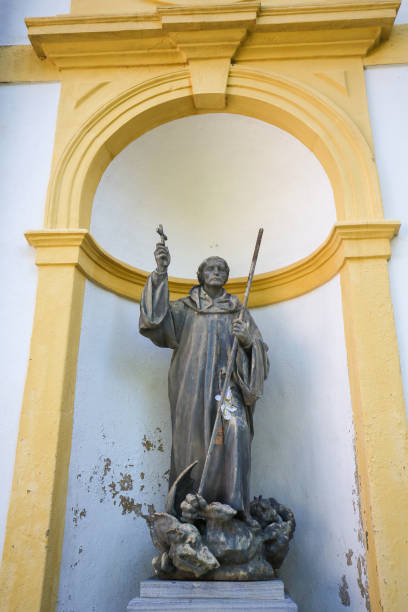
Statue of Saint Magnus of Fuessen, also known as Saint Mang, in the Saint Mang Basilica in Fussen, Bavaria, Germany.
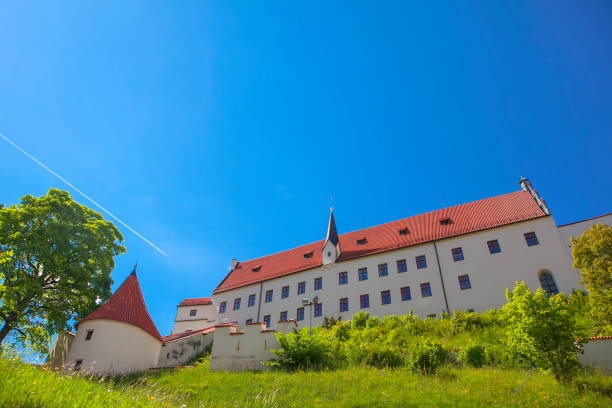
Benedictine monastery of St. Mang in Fussen town

The monastery and the former Basilica of St. Mang date back to St. Magnus, an Irish missionary from the monastery of St. Gallen who worked in the Allgäu in the 8th century. Above his cell was the first church, which was extended and built over in the course of the centuries. The church was extended to its present size between the 11th and 14th centuries. The tower dates from 1200 and was ravaged and looted in the Thirty Years’ War, St. Mang was rebuilt in the Italian Baroque style by Johann Jakob Herkomer at the beginning of the 18th century. A light-flooded room, frescoes and marble characterize this style. The text was writen by myself

The monastery and the former Basilica of St. Mang date back to St. Magnus, an Irish missionary from the monastery of St. Gallen who worked in the Allgäu in the 8th century. Above his cell was the first church, which was extended and built over in the course of the centuries. The church was extended to its present size between the 11th and 14th centuries. The tower dates from 1200 and was ravaged and looted in the Thirty Years’ War, St. Mang was rebuilt in the Italian Baroque style by Johann Jakob Herkomer at the beginning of the 18th century. A light-flooded room, frescoes and marble characterize this style. The text was writen by myself
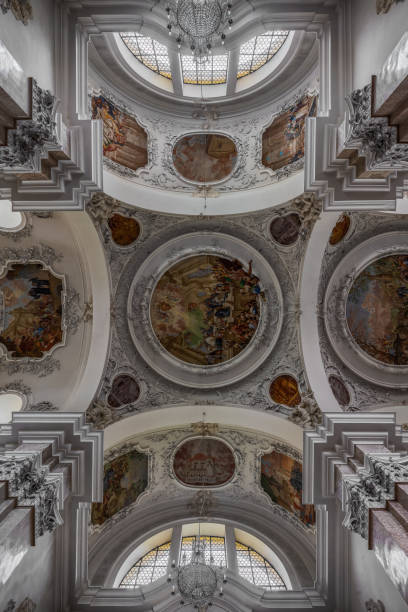
The monastery and the former Basilica of St. Mang date back to St. Magnus, an Irish missionary from the monastery of St. Gallen who worked in the Allgäu in the 8th century. Above his cell was the first church, which was extended and built over in the course of the centuries. The church was extended to its present size between the 11th and 14th centuries. The tower dates from 1200 and was ravaged and looted in the Thirty Years’ War, St. Mang was rebuilt in the Italian Baroque style by Johann Jakob Herkomer at the beginning of the 18th century. A light-flooded room, frescoes and marble characterize this style. The text was writen by myself
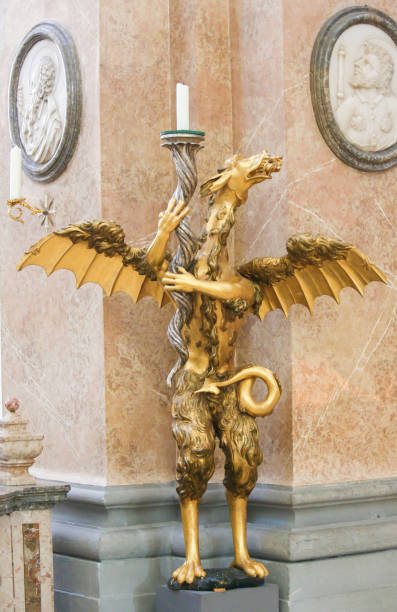
Bronze Candelabrum in the Shape of a Dragon in the Saint Mang Basilica in Fussen, Bavaria, Germany.

St Mang's Basilica and St Mang's Abbey, Lech River, Fuessen, Bavaria, Germany. Benedictine monastery.
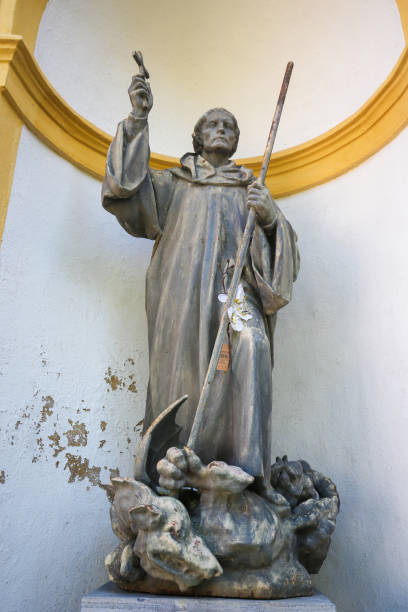
Statue of Saint Magnus of Fuessen, also known as Saint Mang, in the Saint Mang Basilica in Fussen, Bavaria, Germany.

Fussen, Germany - June 30, 2012: St. Mang former monastery in Fussen Germany
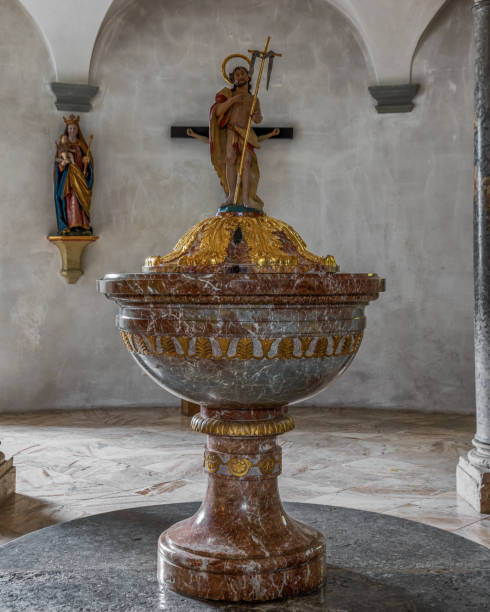
The monastery and the former Basilica of St. Mang date back to St. Magnus, an Irish missionary from the monastery of St. Gallen who worked in the Allgäu in the 8th century. Above his cell was the first church, which was extended and built over in the course of the centuries. The church was extended to its present size between the 11th and 14th centuries. The tower dates from 1200 and was ravaged and looted in the Thirty Years’ War, St. Mang was rebuilt in the Italian Baroque style by Johann Jakob Herkomer at the beginning of the 18th century. A light-flooded room, frescoes and marble characterize this style. The text was writen by myself
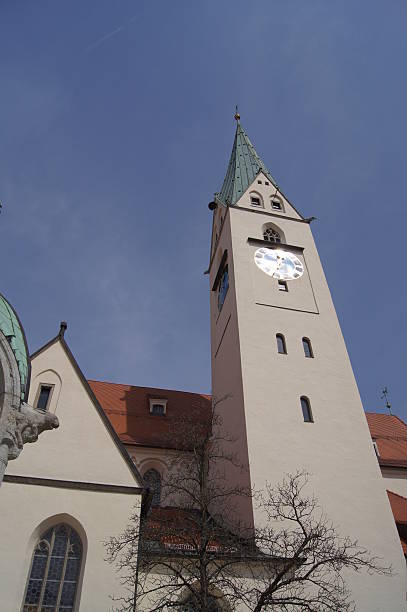
Saint Mang Church, Germany, Bavaria, Allgäu, Kempten

